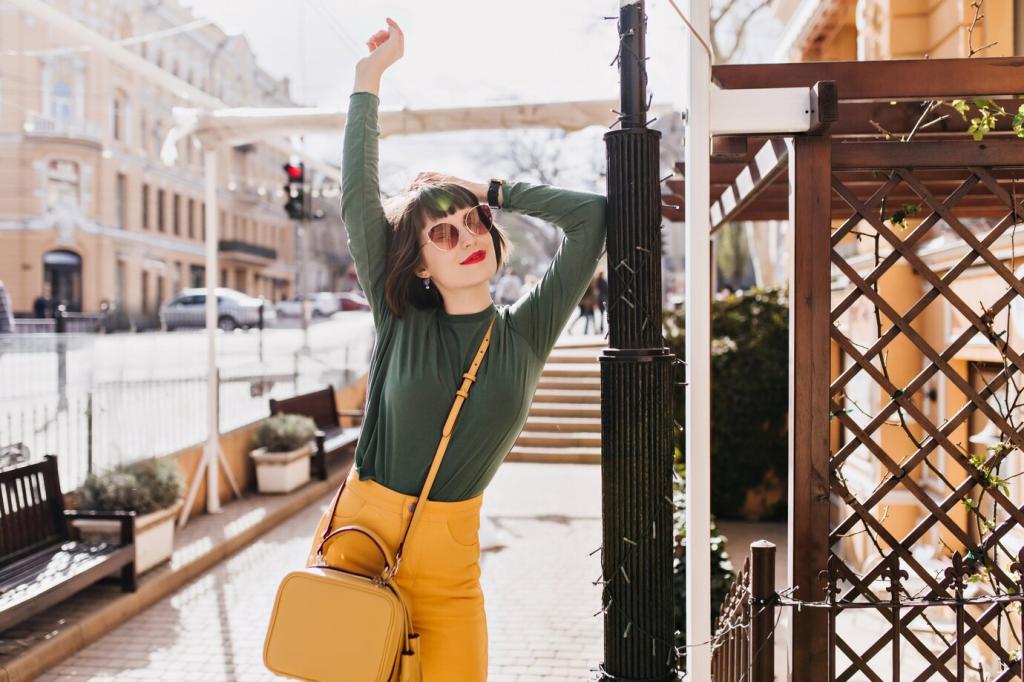Literary Trails: Cities That Inspired Writers
Step into streets where sentences were born and doorways where drafts began. Today’s chosen theme: Literary Trails: Cities That Inspired Writers. Pack curiosity, lace up your walking shoes, and join our community as we explore the neighborhoods that turned life into literature.

Mapping the Muse: Why Cities Spark Great Books
Street names behave like chapter titles; every crosswalk turns into a comma. Writers collect scents from bakeries, overheard fragments from bus queues, and the rustle of newspapers, arranging them into paragraphs that smell like rain and taste like morning.
Between a chipped ceramic cup and a fogged window, ideas collide. Cities host accidental salons—artists arguing softly, students annotating margins, musicians lugging cases. Those collisions lend texture to scenes, the way grit in paint gives an image grain, depth, and human warmth.
Tell us in the comments which city calls your imagination first, and why. Subscribe for walking maps, printable prompts, and reading lists that transform sidewalks into pages you can underline with your steps.

Paris: Sidewalks of Modernism
Picture a notebook open beside a cheap espresso, boulevard plane trees flaking sunlit bark. Hemingway chased clean sentences here, learning that a city’s discipline could be a sharpened pencil—paring excess until the truth stood plain as a white cup.
Paris: Sidewalks of Modernism
In that storied bookshop, a lending library once stitched expatriates into a tribe. You can still feel the hush of pages and the courage of first drafts, the way a friendly shelf makes a stranger believe their paragraph belongs.
Paris: Sidewalks of Modernism
Start at the Île de la Cité at sunrise, cross to the Latin Quarter, then trace quayside bouquinistes for marginalia treasures. Share your favorite Paris passage below, and we’ll feature a community map of quotes pinned to real cobblestones.
Dublin: The Ordinary Made Epic
On Bloomsday, doorways dress as pages and walkers read while moving, time folding into fiction. Joyce showed how pavement could be plot, one lunch a mythology. It’s a holiday of noticing, of elevating receipts and routes into luminous narrative.
Conversations rise like steam: local jokes, political sparks, the poetry of daily stubbornness. Writers learned cadence from bar counters—the sentence that holds a smile too long, the pause before a punchline. Language here wears boots, muddy and marvelous.
Choose three humble errands this week and narrate them as a hero’s quest—what trials, which allies, and the unexpected talisman. Post a paragraph in the comments and subscribe for a Dublin-inspired micro-guide to turning routine into revelation.

Tokyo: Neon, Quiet, and the Sentence Between
On late trains, you can watch reflections layering lives. A notebook on your lap, city lights flicker like annotations. Many writers find night in Tokyo teaches restraint—how to say less and mean more, letting silence underline what matters.
Prague: Shadows That Clarify
Imagine drafting after hours, the office quiet, papers stacked like indifferent mountains. Kafka’s Prague shows how institutions shape nightmares—and how humor sneaks in anyway. The city lent him geometry for anxiety, precise angles for a trembling map.
